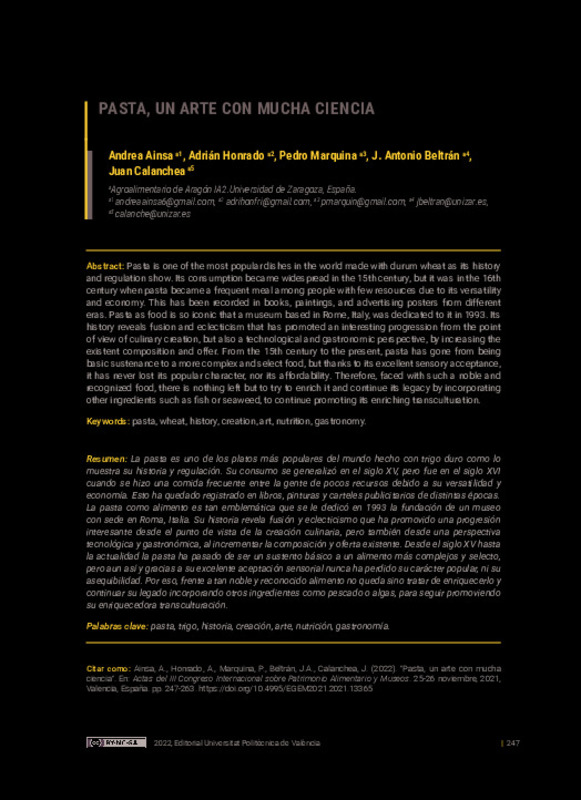JavaScript is disabled for your browser. Some features of this site may not work without it.
Buscar en RiuNet
Listar
Mi cuenta
Estadísticas
Ayuda RiuNet
Admin. UPV
Pasta, un arte con mucha ciencia
Mostrar el registro completo del ítem
Ainsa, A.; Honrado, A.; Marquina, P.; Beltrán, JA.; Calanche, J. (2022). Pasta, un arte con mucha ciencia. En Actas del III Congreso Internacional sobre Patrimonio Alimentario y Museos. Editorial Universitat Politècnica de València. 247-261. https://doi.org/10.4995/EGEM2021.2021.13365
Por favor, use este identificador para citar o enlazar este ítem: http://hdl.handle.net/10251/184704
Ficheros en el ítem
Metadatos del ítem
| Título: | Pasta, un arte con mucha ciencia | |
| Autor: | Ainsa, Andrea Honrado, Adrián Marquina, Pedro Beltrán, José Antonio Calanche, Juan | |
| Fecha difusión: |
|
|
| Resumen: |
[EN] Pasta is one of the most popular dishes in the world made with durum wheat as its history
and regulation show. Its consumption became widespread in the 15th century, but it was in the 16th
century when pasta became ...[+]
[ES] La pasta es uno de los platos más populares del mundo hecho con trigo duro como lo muestra su historia y regulación. Su consumo se generalizó en el siglo XV, pero fue en el siglo XVI cuando se hizo una comida frecuente ...[+]
|
|
| Palabras clave: |
|
|
| Derechos de uso: | Reconocimiento - No comercial - Compartir igual (by-nc-sa) | |
| ISBN: |
|
|
| Fuente: |
|
|
| DOI: |
|
|
| Editorial: |
|
|
| Versión del editor: | http://ocs.editorial.upv.es/index.php/EGEM/EGEM2021/paper/view/13365 | |
| Título del congreso: |
|
|
| Lugar del congreso: |
|
|
| Fecha congreso: |
|
|
| Tipo: |
|








